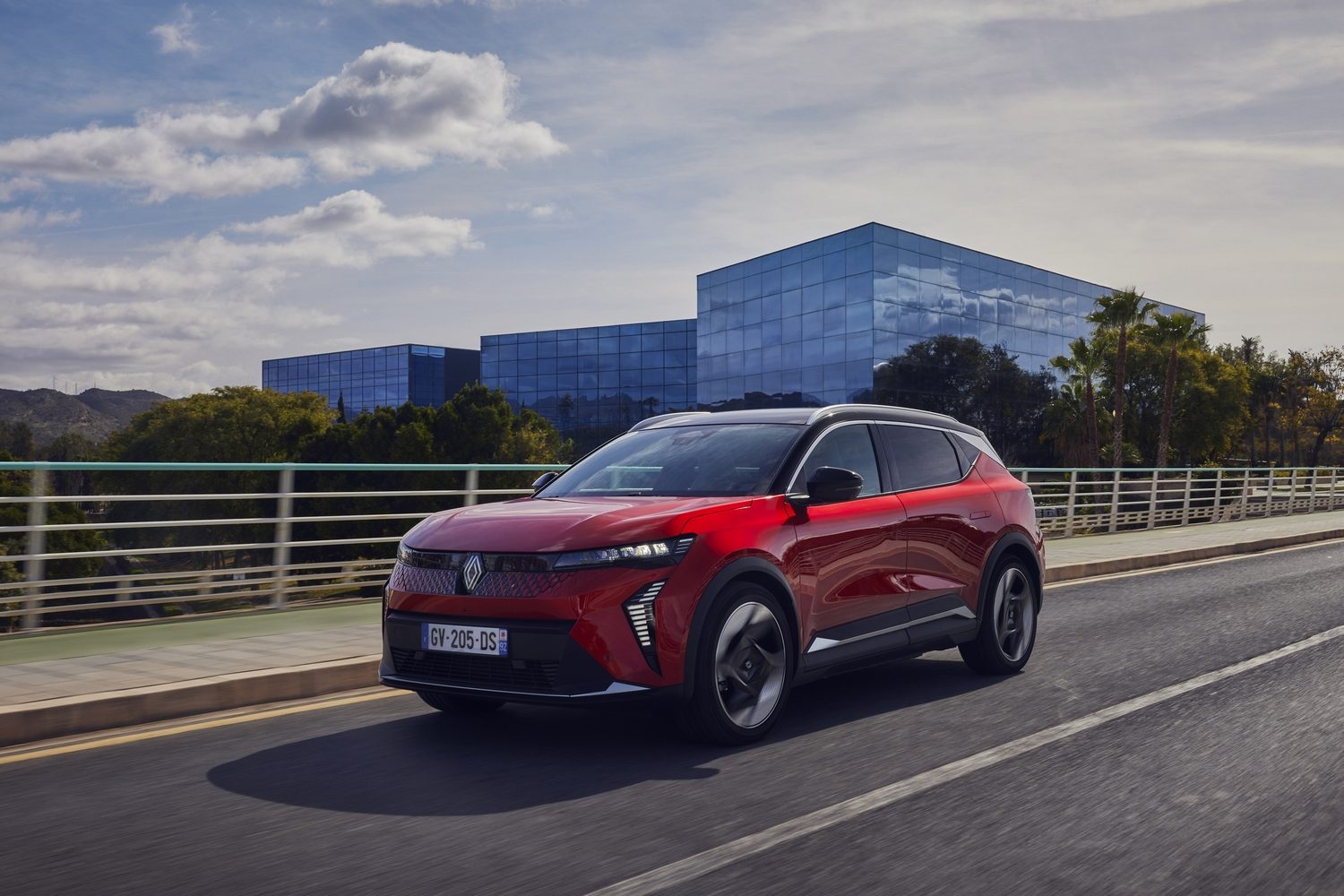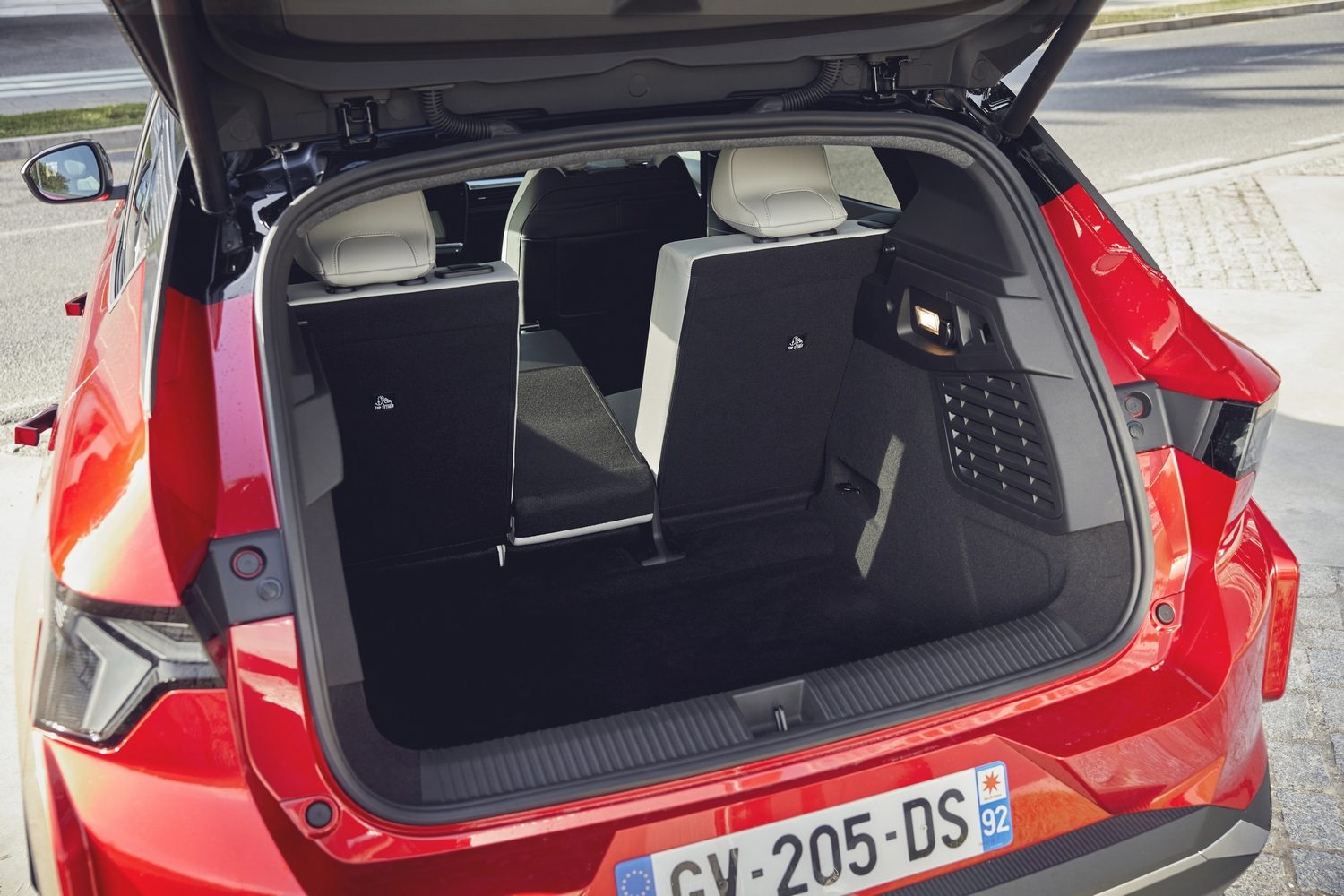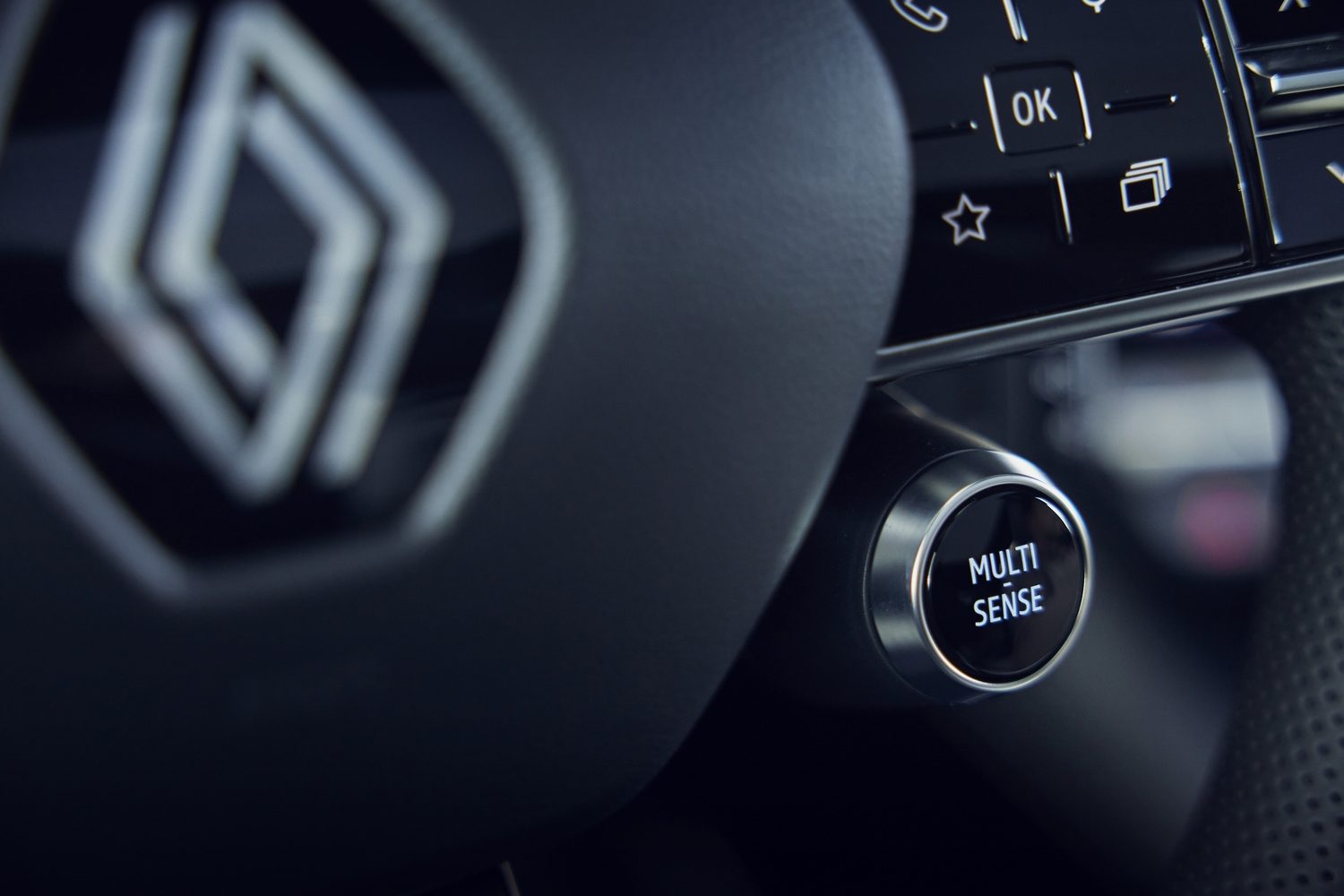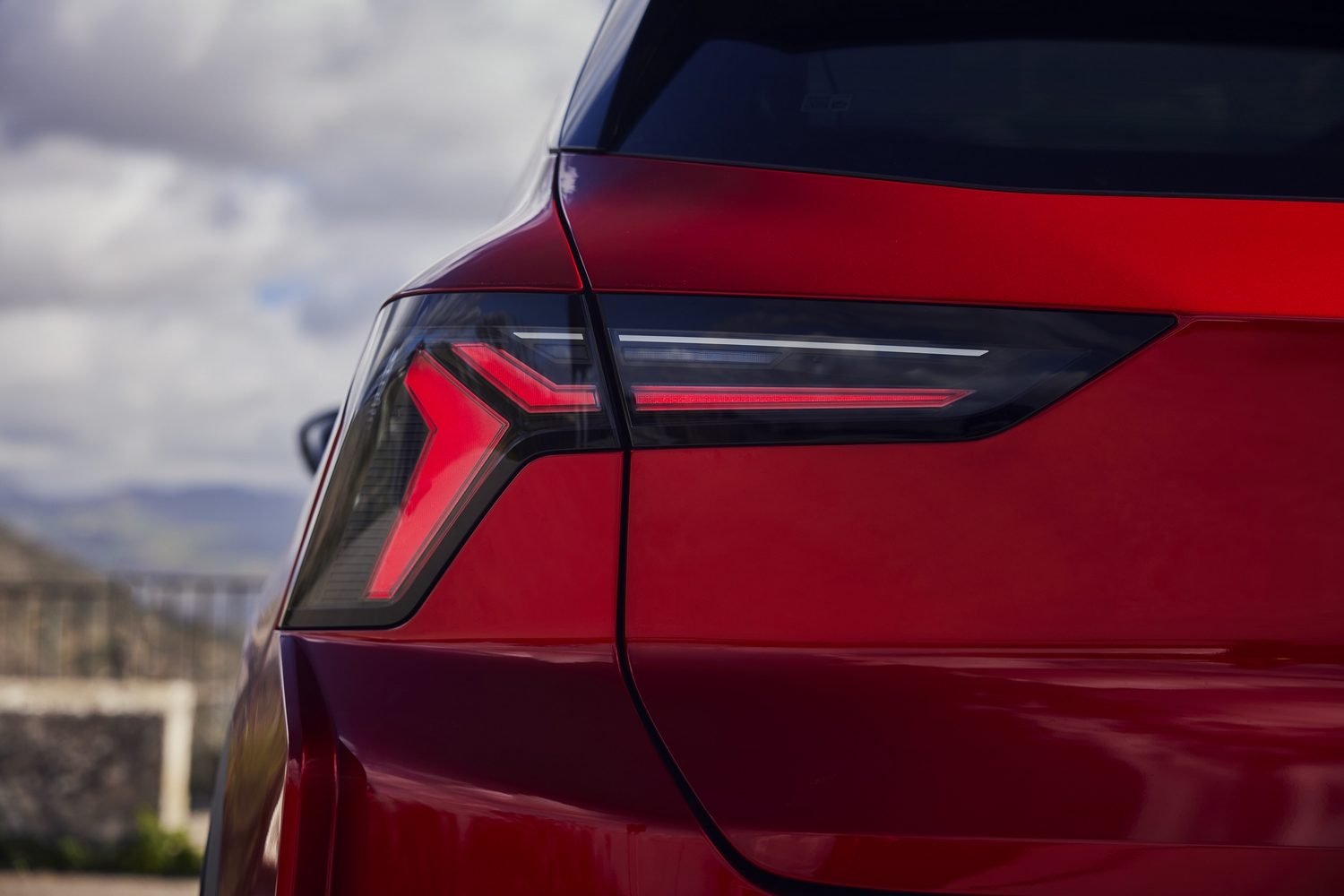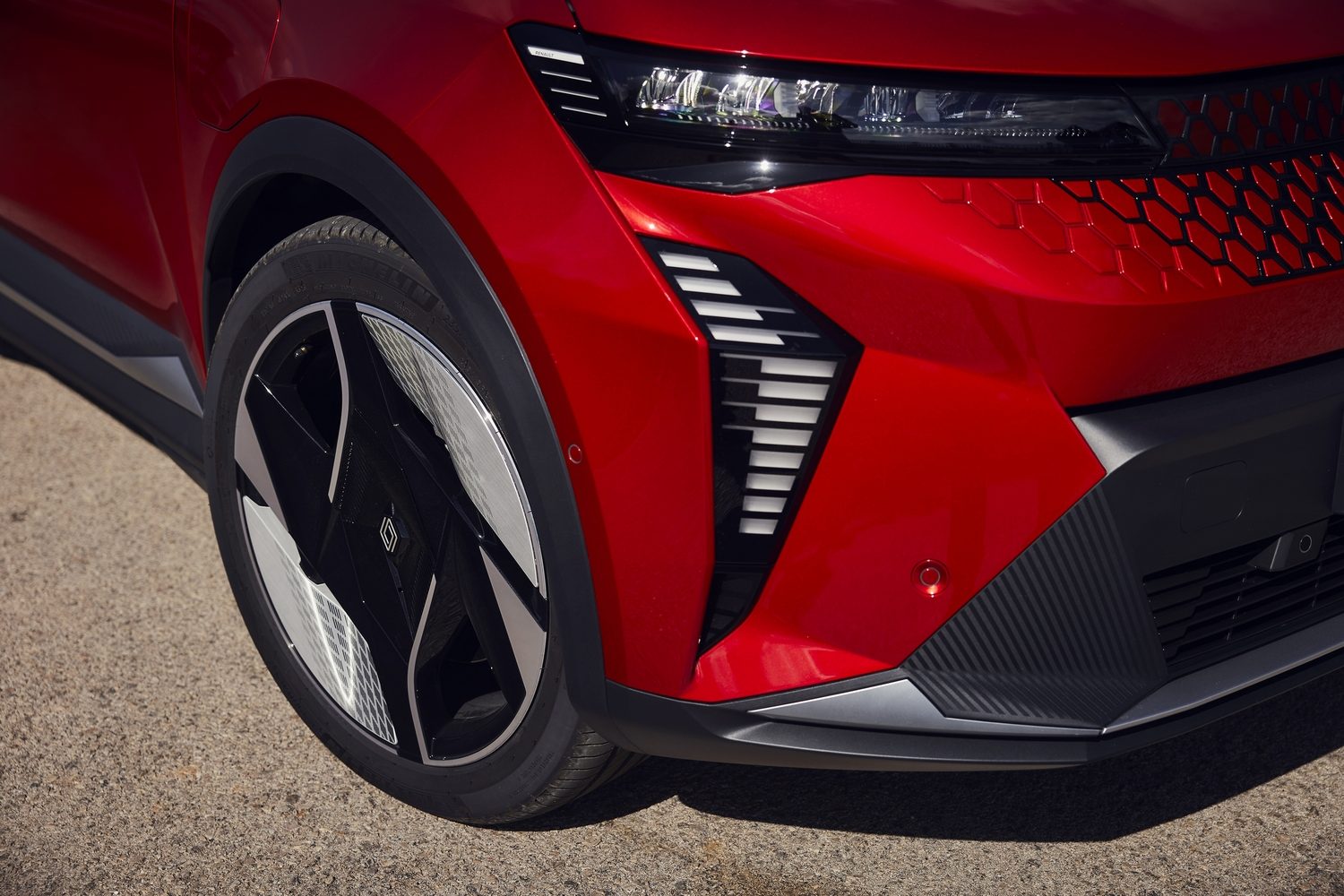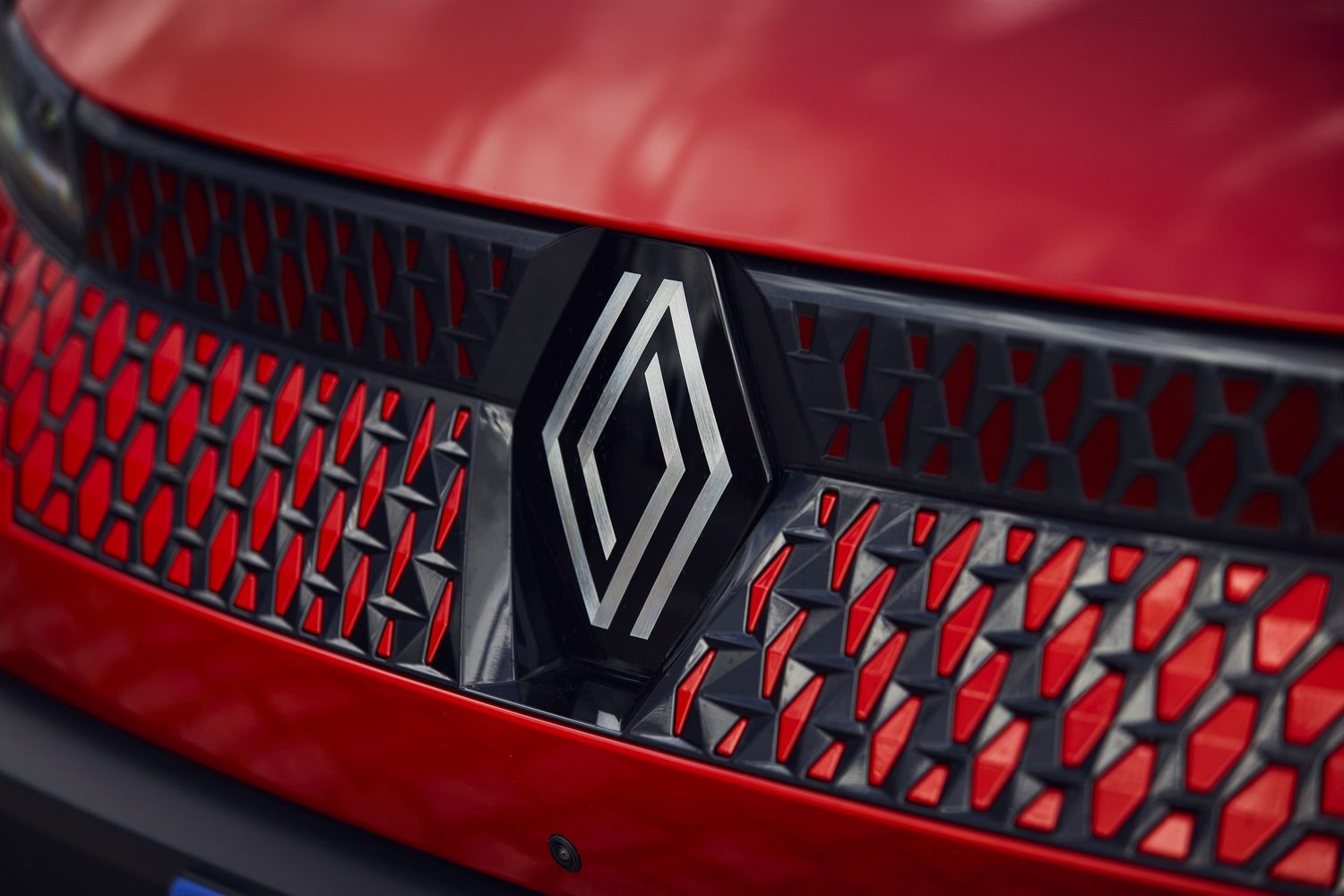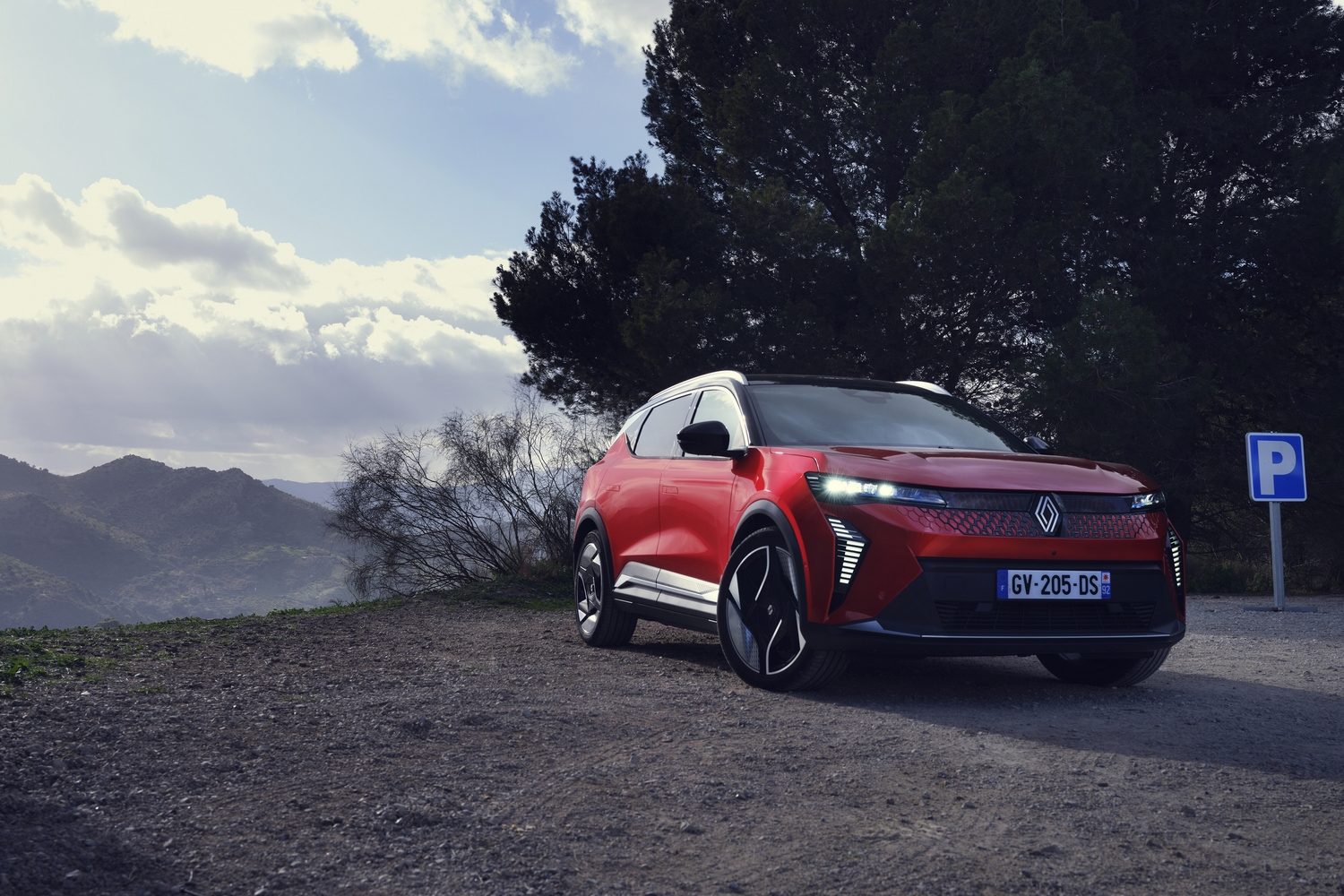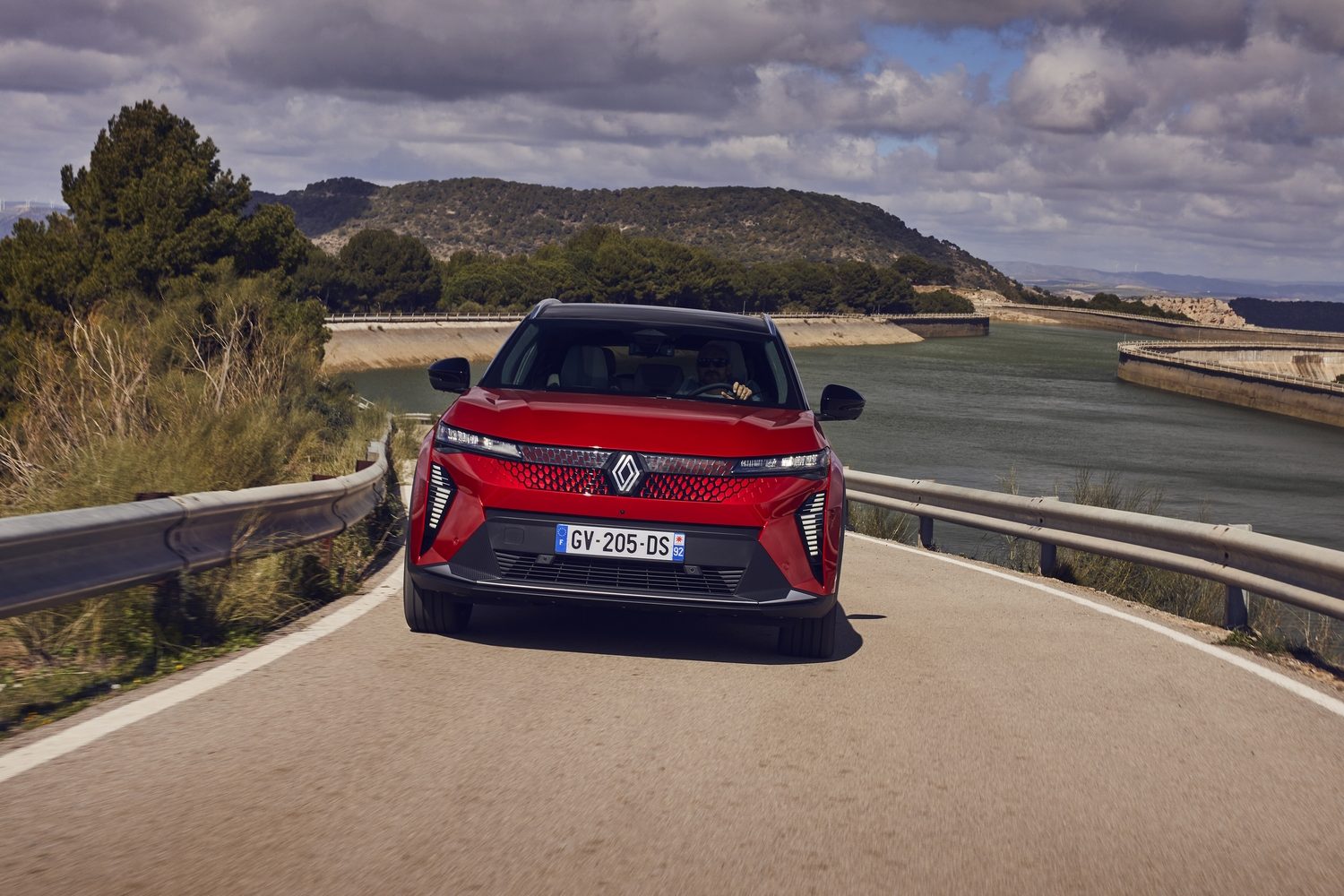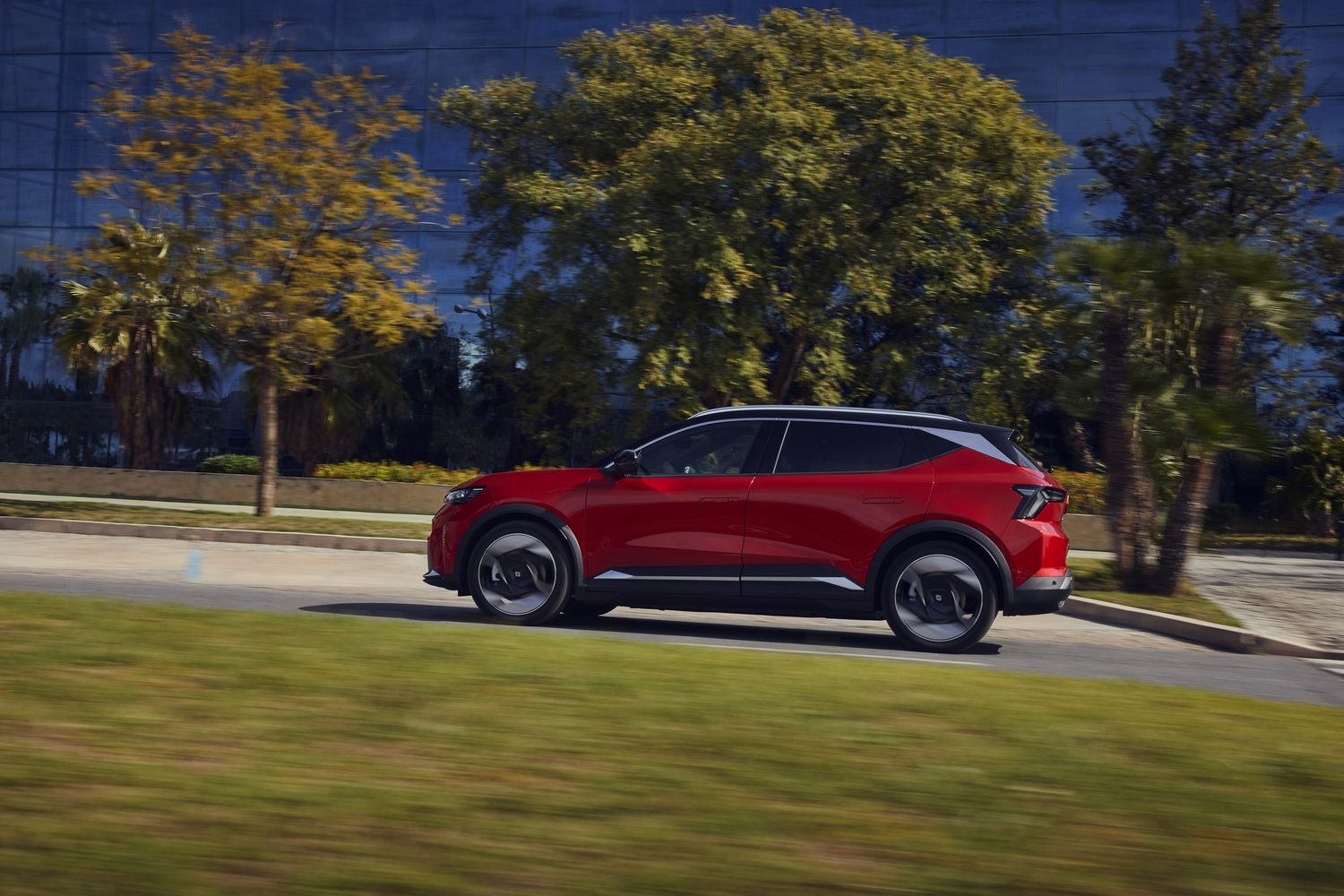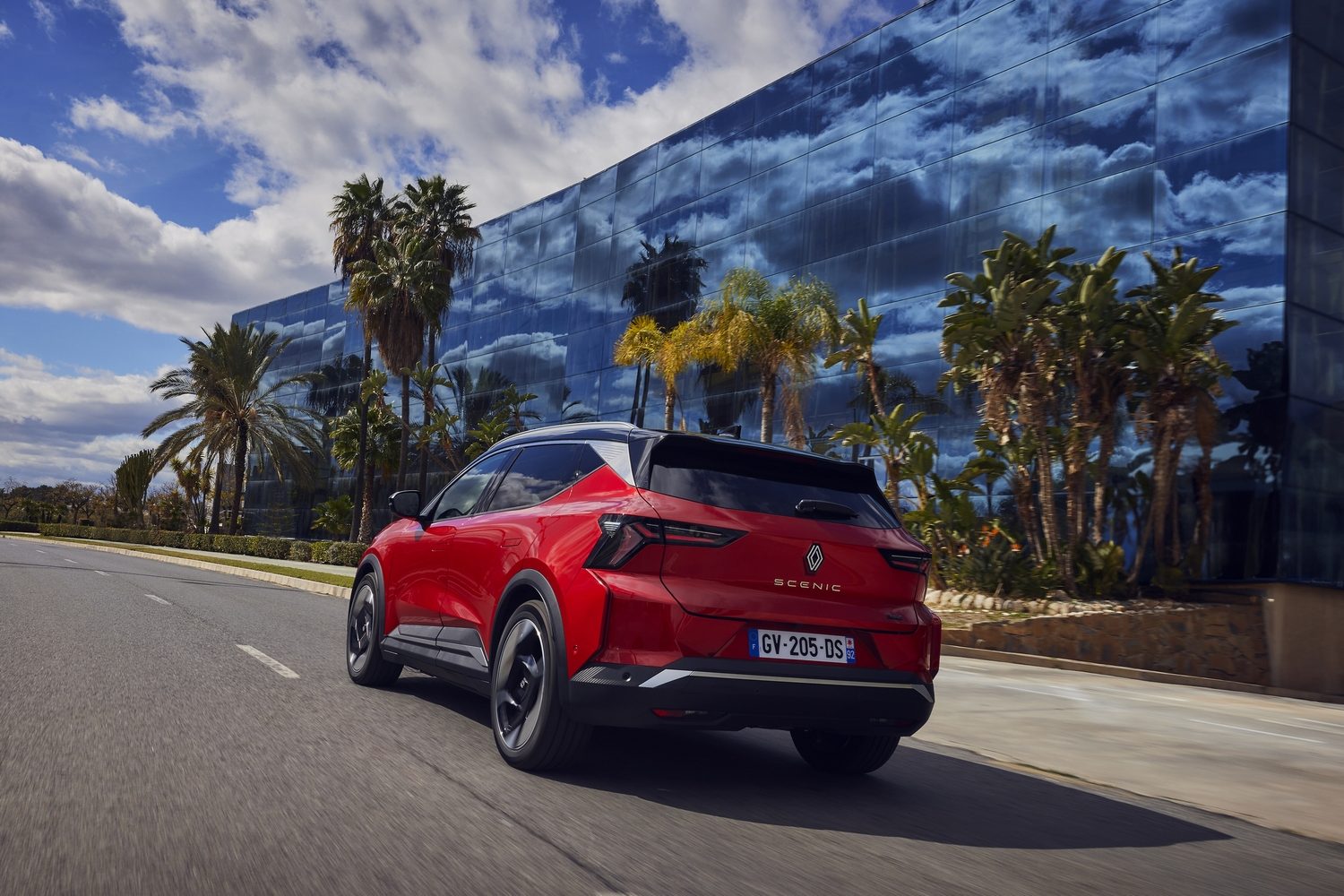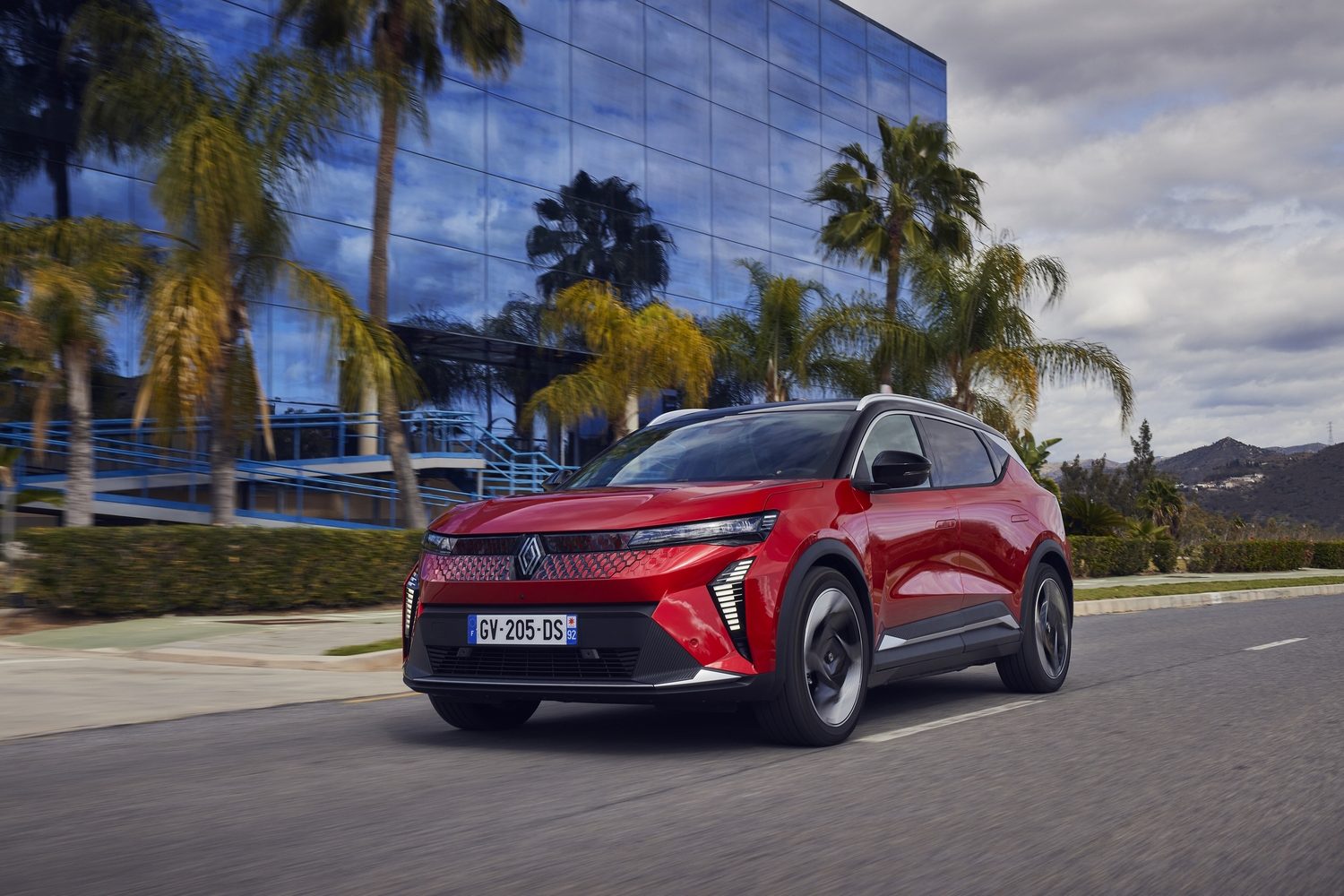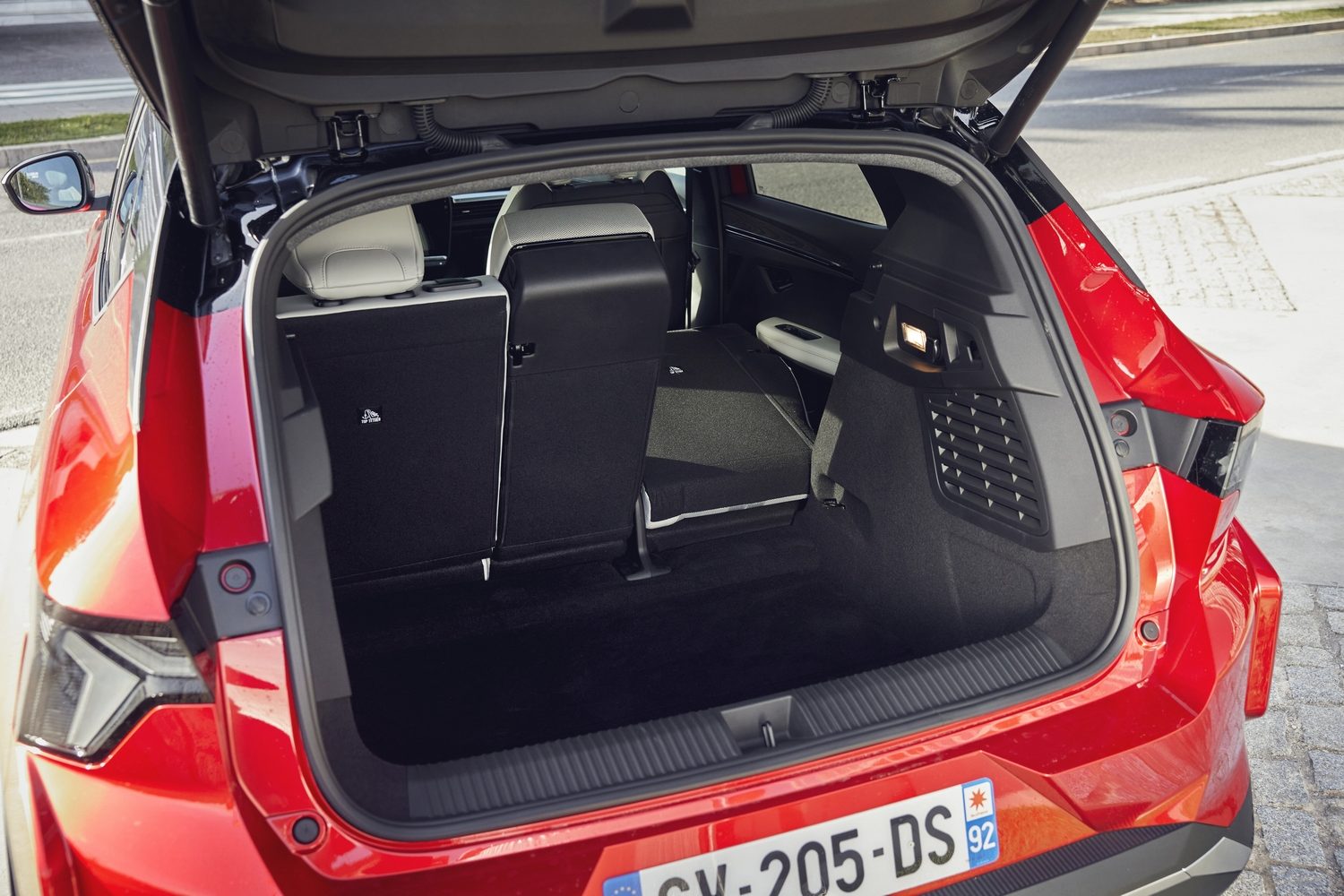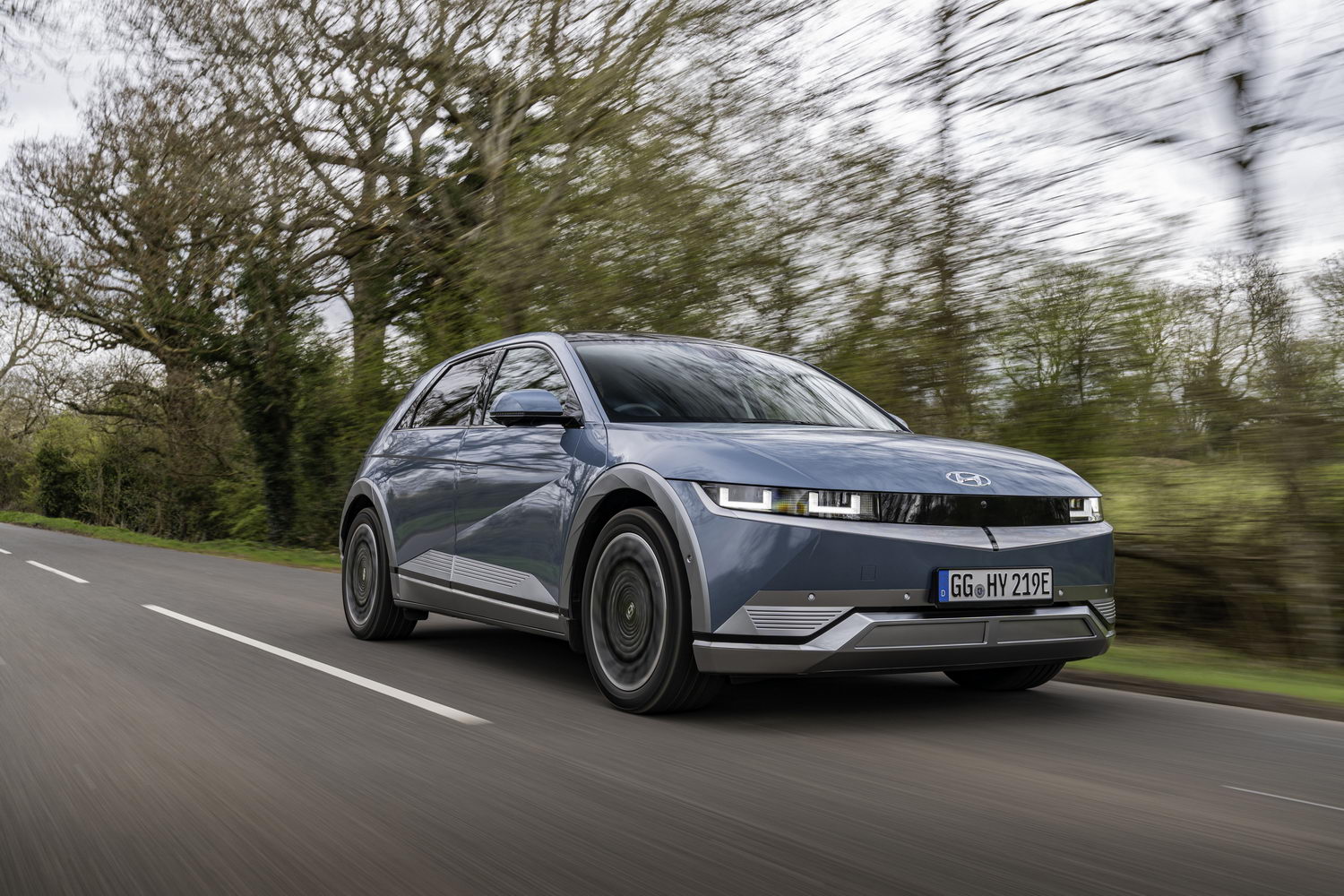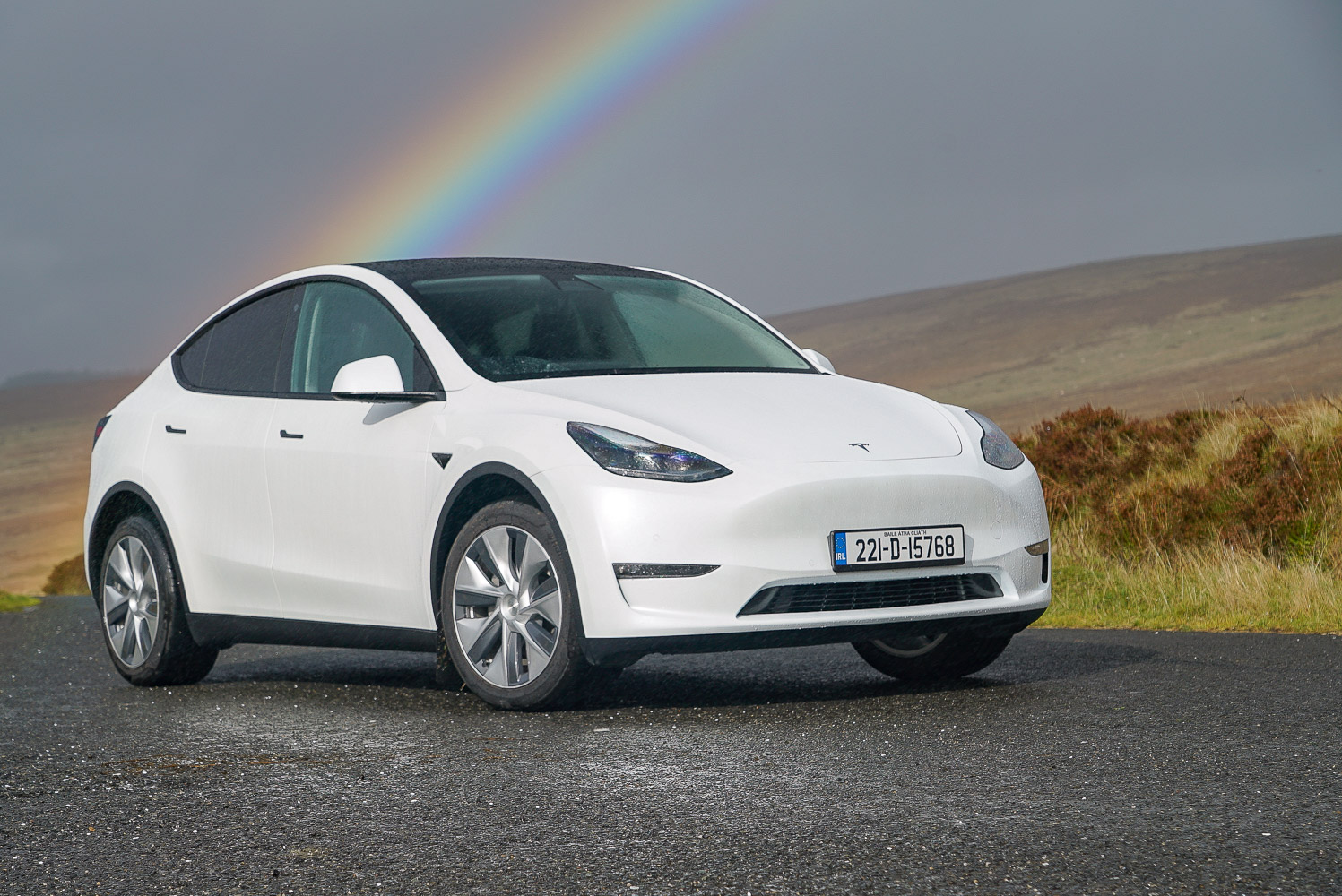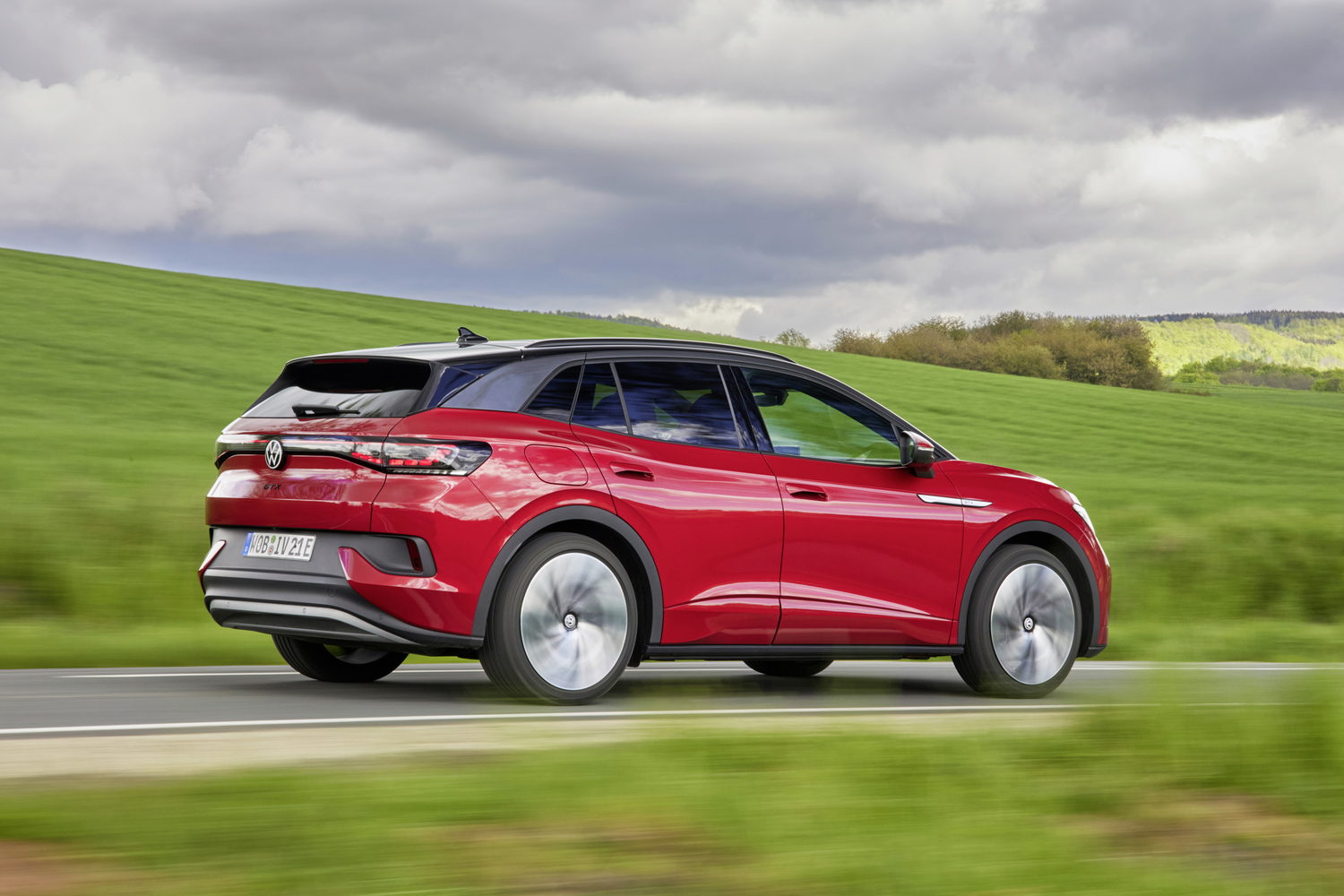The new Renault Scenic has big boots - and indeed, a big boot - to fill. The original 1998 Megane Scenic, the first enormously popular compact MPV, was a revolutionarily practical and useful car, and one that changed the car market around it for a decade. This new Scenic seems to tread a more predictable route but can it live up to the legacy of its Scenic forebear? And, indeed, does it have to?
In the metal
Renault is effectively creating a three-strand model lineup. On one strand are the internal combustion and hybrid-engined models, such as the Clio, Captur, Arkana, Austral and the upcoming Rafale. Way off on another strand is the incoming lineup of 'icons' - classic models and badges recreated for the electric world, starting with the new Renault 5 EV (which should be on sale in Ireland in time for January 2025) and the revived Renault 4 EV.
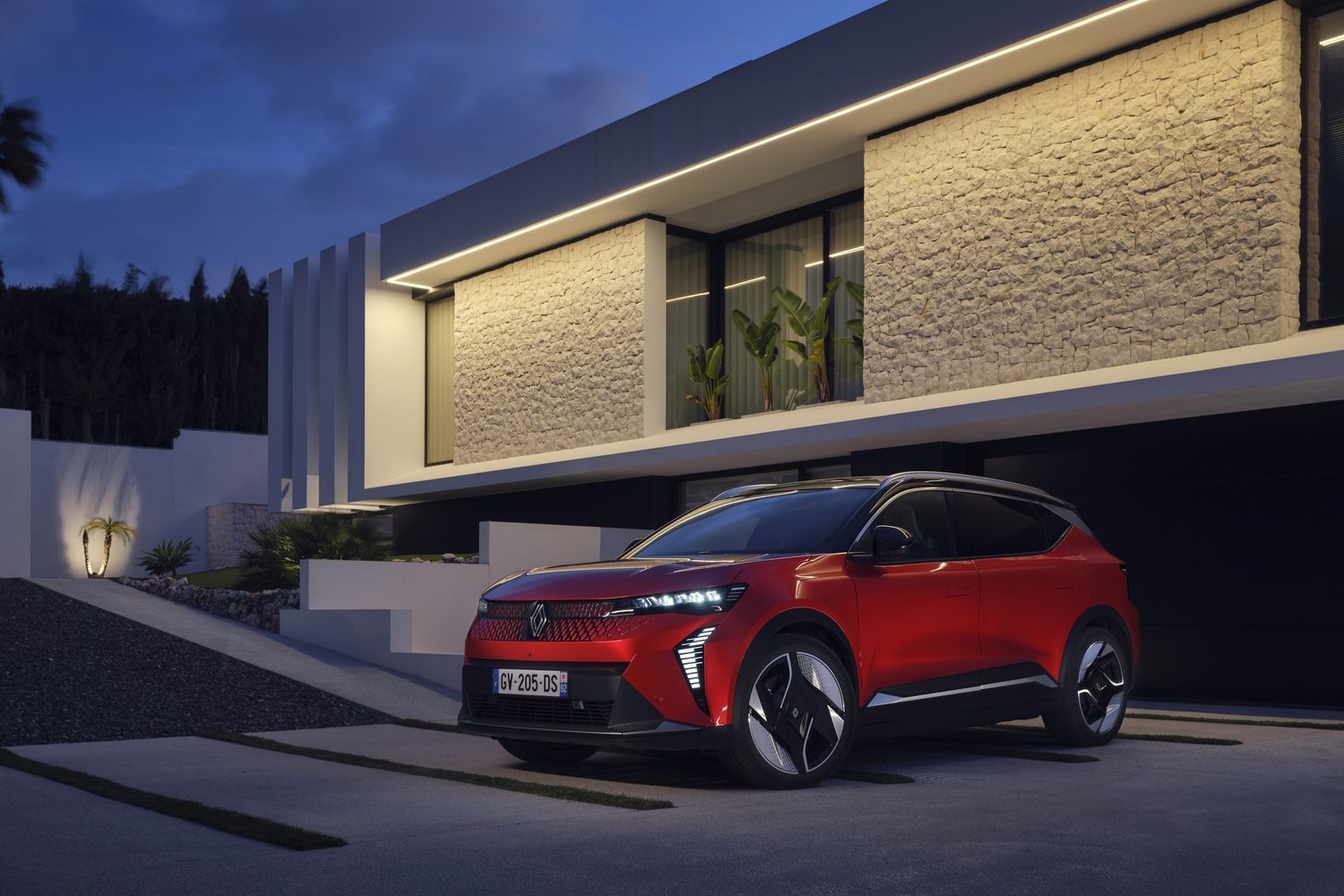
In the middle, we find the current Renault Megane E-Tech electric and the new Scenic reviewed here. All-electric, so certainly forward-looking, but lacking the obviously retro design cues of the 4 and 5, leaning more towards the more conventional looks of the rest of the range. It's the strand for people who desire electric power and technology, but who don't necessarily want to make a statement about it.
Not that the new Scenic is not attractive. It picks up many of the styling cues of the good-looking Renault Megane hatchback and extrapolates them into a larger, more capacious SUV. That's right, an SUV, while the Megane Scenic of the late nineties was, of course, the first truly successful mid-size MPV, wowing buyers with its mix of space, practicality and running costs. Buyer tastes have changed utterly since then, and now everyone wants an SUV, so the new Scenic, although it riffs on the heritage, had to be one if anyone was actually going to buy it. Which is, to the purist, a bit of a shame but then again most of the buyers for this new Scenic probably don't even remember the original, nor even know what an MPV was...
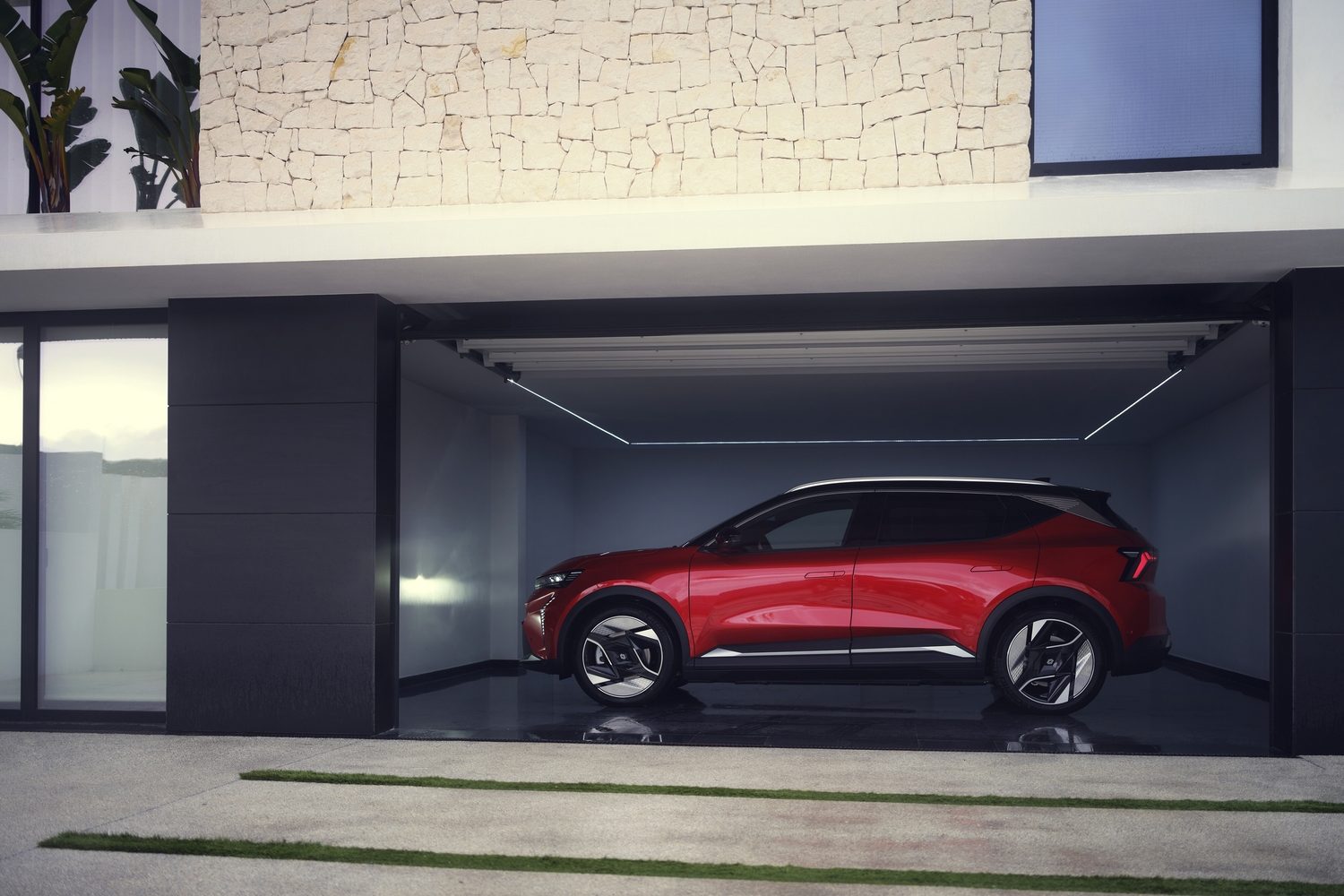
As SUVs go, the Scenic is handsome, with razor-edged styling, glowering headlights and an arrestingly low roof. The whole car is quite compact for its class - it's 4.47 metres long at a time when many rivals are heading for 5.0 metres - and so it looks squat and purposeful. Get it in the Flame Red of our test car for the best effect, although the almost-matte grey option works surprisingly well too.
Inside is the Scenic's trump card - it has a truly excellent cabin. The big 12.3-inch digital instrument display looks sharp for a start and has complex graphics that are pleasing to the eye. Next to it is another 12.3-inch screen, this one in vertical portrait mode (a squarer nine-inch screen is fitted to the basic Evolution model and comes with more basic software) running the latest version of Renault's Google-based operating system. This makes for a very satisfying touchscreen - it is fast, responsive, easy to find your way around and, crucially, has physical buttons at the base to control the climate functions. Bon.
The front seats of our Iconic-spec test car were upholstered in a pleasant grey, tweed-like cloth and were exceptionally comfortable and supportive. Between them is a long centre console with split-level storage areas (one lidded, one open) which have masses of space thanks to the fact that, as in the Megane, the drive selector has been moved to one of the steering column stalks (that side of the steering column gets a bit crowded, with gears, wipers and the fingertip stereo controls, but you do get used to it). There's also a spacious glovebox and good door bins, plus a brace of USB-C sockets. It's all very practical, just as a car badged Scenic ought to be.

What about the back seats? The rear seat is one continuous bench and has no adjustability. The back does split-fold 40:20:40, and there is a useful ski hatch for loading through long items, but beyond that there's little in the way of real innovation. There is a neat armrest (standard on all but the base model) which incorporates both cupholders and little slots in which you can prop a phone or tablet, which I handy if you're watching a film on the go and don't want tired arms. These are backed up by two USB-C sockets in the armrest itself, and another two between the front seats, so charging is well taken care of.
Too many supposedly-family-friendly cars skimp on rear cabin quality and comfort, but not the Scenic. There is a faint whiff of the usual EV issue that the floor is too high, making you sit with your knees up at an uncomfortable angle, but it's better than you'll find in some rivals. The seat itself is sumptuously upholstered, and some models get a fabric weave which is designed to be random in its pattern, so that no two Scenics should ever be entirely alike. There are good-sized side windows for seeing out, and large and small seat-back pockets for various electronic devices or books. Legroom is copious.
As is headroom, aided by the fact that the optional glass 'Solarbay' roof doesn't need a separate blind. Instead, this massive glass panel is electrified, and can be switched from entirely clear to fully opaque at the nudge of a switch. It's a cool effect, and you can choose to have the front or rear half of the roof 'open' or 'closed' separately to the other. It's also heat-insulating, which Renault says helps to stabilise the cabin temperature and relieve the strain on the climate control system.
The boot is generous - 545 litres - and there's useful under-floor storage for charging cables. There is a deep loading lip, however this can be eliminated with an optional storage system which gives you a flat floor from the boot lip, and separated storage boxes underneath a false floor. All versions bar the base model come with an electric tailgate.

Interestingly, the Scenic comes with around 25 per cent recycled components by weight, and the whole car is 90 per cent recyclable. The battery is split into 12 separate modules, which can be individually removed and repaired or replaced in the event of a failure, but the battery itself is covered by an eight-year, 160,000km warranty.
Driving it
The electric Renault Scenic will come with two powertrain options. There's a basic version with a 60kWh battery and a 160hp motor, which promises an official range of up to 430km. Our test car featured the 87kWh battery and a 220hp motor that does without rare-earth metals.
On a full charge, this bigger battery promises a 625km range, which would be hugely impressive. Is it realistic? Partly so. Renault admits that at French motorway speeds (at a 130km/h maximum) you'll discharge the battery in about three hours, but that still means around 360km. On slower Irish motorways, running non-stop, that should stretch to 400km, and there's a standard-fit heat-pump heating system to try and keep that range honest in the winter.
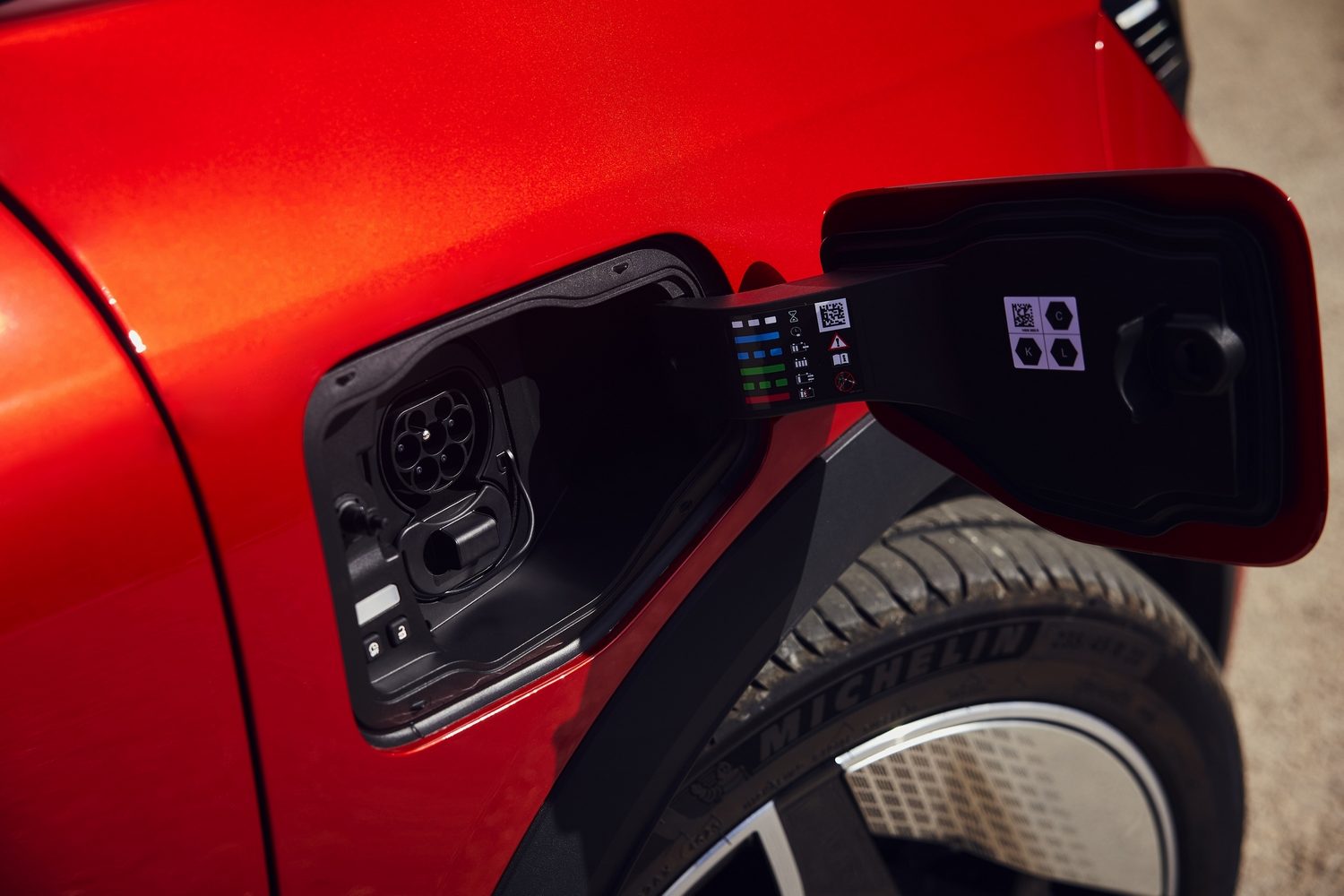
In more mixed driving, going by what we saw on our Spanish test drive that mixed some short motorway bursts with snarled-up urban driving and lots and lots of twisty, fast mountain roads somewhere north of 500km is a realistic day-to-day expectation, which is pretty good and on a par with the best-performing rival EVs.
At peak performance, the battery can be charged at up to 150kW on DC power for short bursts, although the quoted official figure is 130kW, and Renault says that the average charging speed over 30 minutes is around 110kW. That's enough, so goes the claim, to get you an extra two hours of high-speed motorway running. Significantly, 22kW AC charging is available, which really helps to provide speedy top-ups at slower kerbside chargers. Renault is also now offering reduced cost charging at IONITY high-speed charging points though its Mobilize service.
Performance is reasonably lively if you have selected Sport mode from the neat little driving mode selector on the right-hand steering wheel spoke (Renault joining in with Porsche, Mercedes-AMG and Ferrari in sensibly giving you a driving mode switch you can get to quickly), but rather more sedate in Eco or Comfort. Mind you, with a 7.9-second 0-100km/h time, one of Renault's engineers rightly pointed out that a mid-eighties Renault 5 Turbo wouldn't be able to keep pace with the electric Scenic. Progress of a sort...
The Scenic isn't all that heavy, either. The entry-level version clocks in at 1,730kg, while a big-battery model with every option fitted is just the right side of 1,900kg - heavy, certainly, but lighter than much of the opposition.
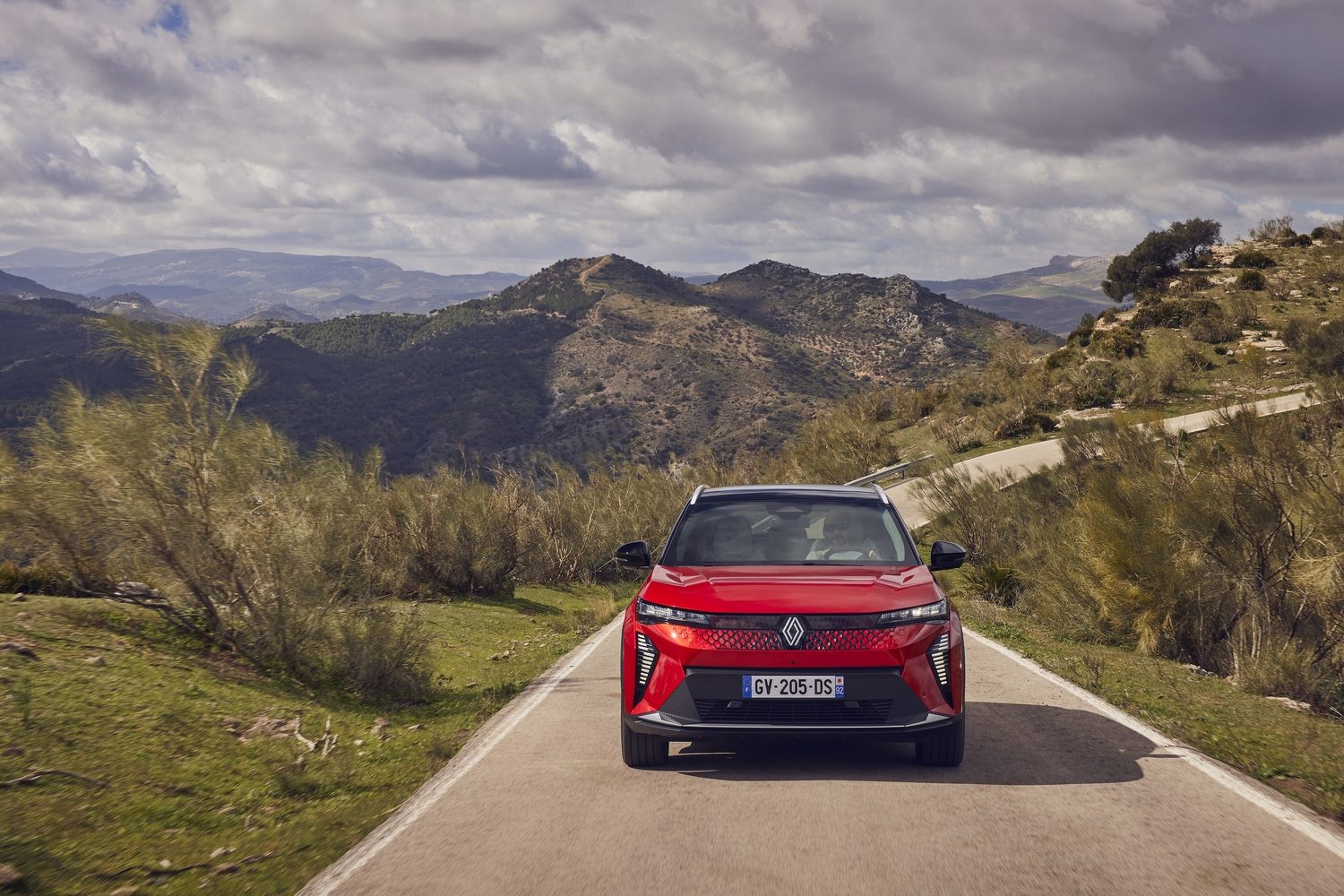
In Sport mode, the steering does liven up considerably, but this is a car - quite rightly, really - built around refinement and comfort. It's quite happy to tackle a series of swooping corners at a decent lick of pace, but you'll notice the weight transfer feels less than entirely deft, and really the Scenic is happier cruising along bigger, straighter roads.
This it does with exceptional refinement. There's a buffer of noise-absorbing foam between the battery and the cabin, and that means that almost no tyre roar gets into the Scenic. There's a bit of wind rustle around the mirrors at motorway speeds, but other than that this is a spectacularly refined car.
The only potential downside is the ride quality. Most of the time it's fine, but there's an underlying firmness that, especially with the optional 20-inch alloys, means short, sharp bumps make their presence felt, and the Scenic can feel a bit too fidgety at times. Perhaps stick to smaller wheels.
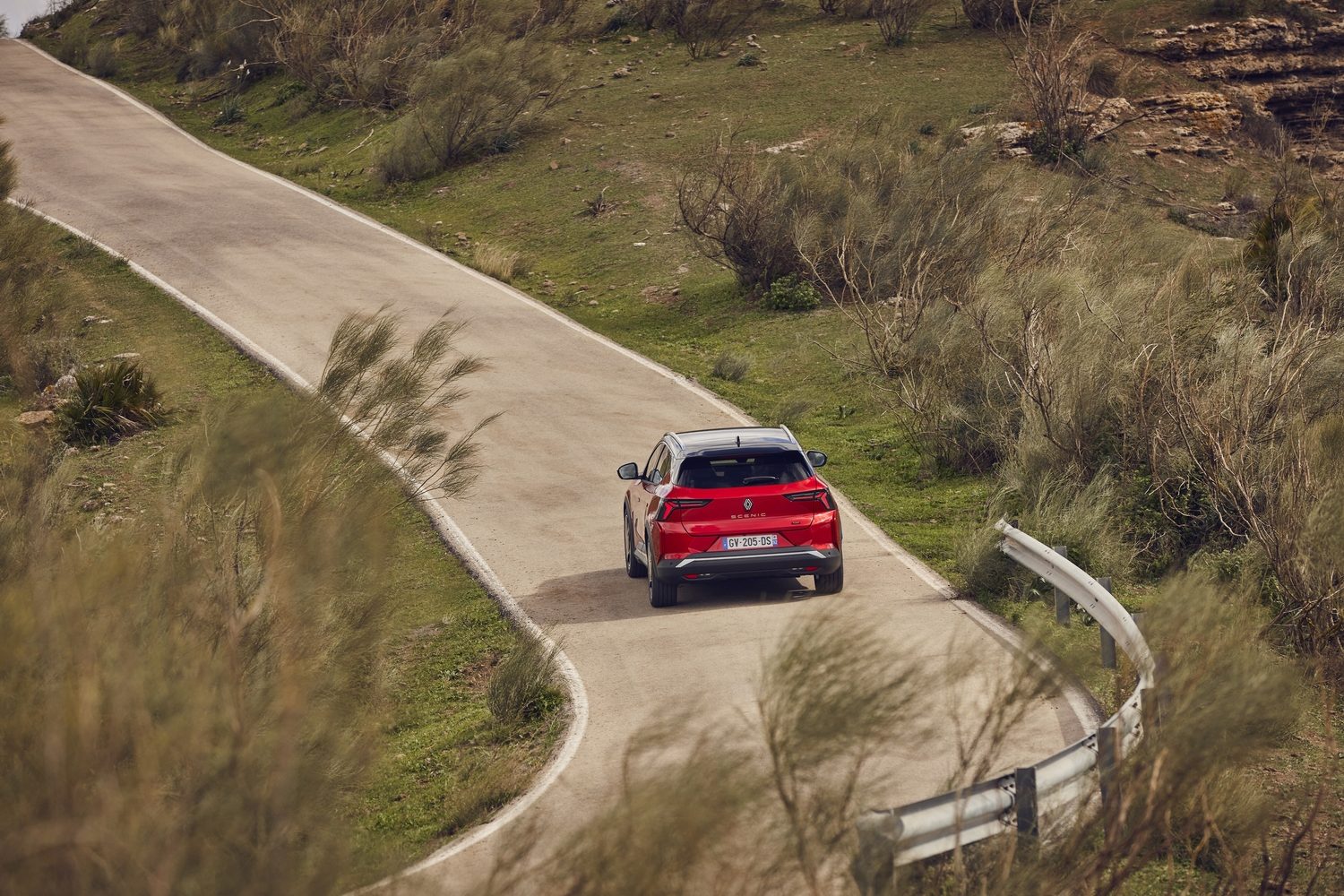
What you get for your money
Irish prices for the Renault Scenic start at €39,995 including incentives. That's for the Evolution model, which only comes with the smaller battery, lower-power motor, but does get standard 19-inch alloys, a nine-inch touchscreen infotainment system, two-zone automatic climate control and adaptive cruise control.
Step up to the Techno model and you can choose between the two battery capacities (priced at either €41,995 or €48,995), and standard spec includes the 12.3-inch Google-based touchscreen, the clever rear armrest and a powered tailgate.

Next up is the sporty-looking Esprit Alpine model, at €51,995. It comes with 20-inch alloys, heated sports front seats and steering wheel, blind-spot warning and emergency lane keeping assistance.
Finally, there's the top-spec Iconic, which includes a Harman Kardon stereo, the Solarbay roof and 3D surround-view camera system. It's priced at €54,795 and, like the Esprit Alpine, is only available with the bigger battery and more powerful electric motor.
Summary
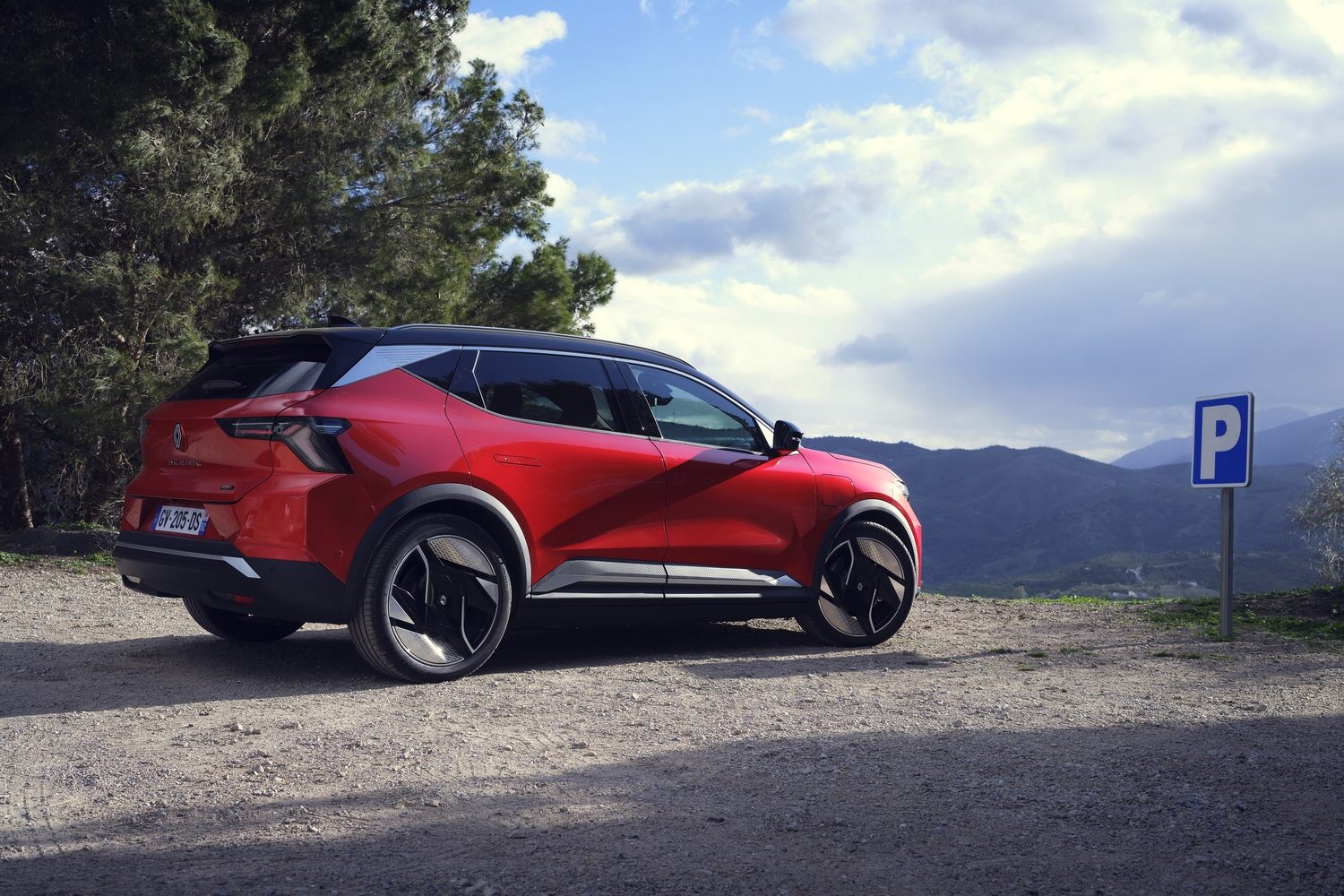
It would be tempting to take the purist route, and in a very French way to cock a snook at the new Scenic for not being a 'proper' Scenic and abandoning its innovative MPV roots. However, it's impossible to not be beguiled by this new Renault Scenic. OK, so it's a more conventional SUV-shaped take on family motoring, but it's roomy, well-made, exceptionally comfortable and refined, and with this big battery has a genuinely useful one-charge range.

